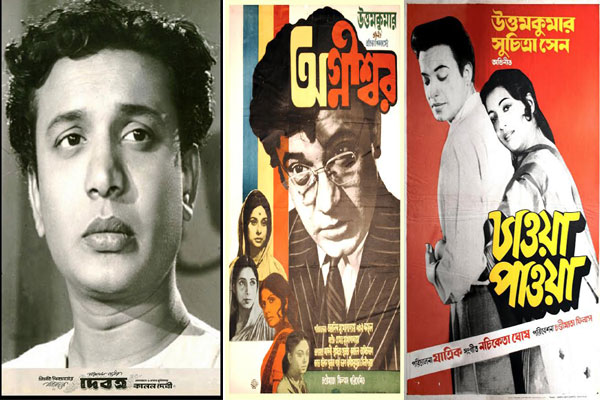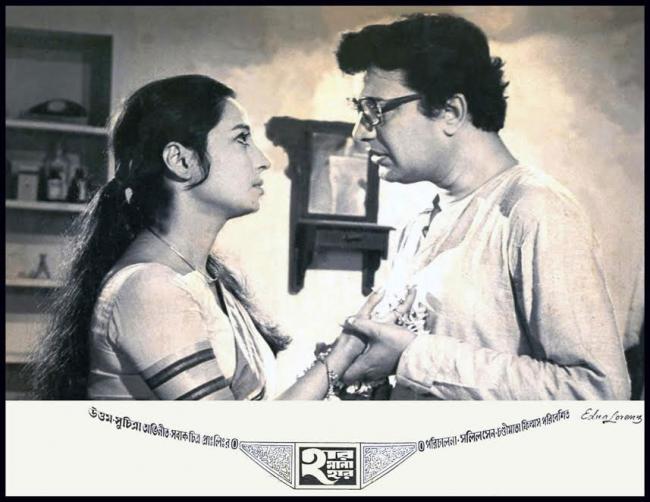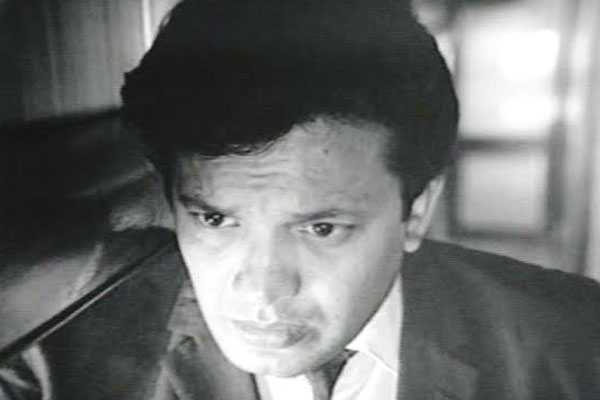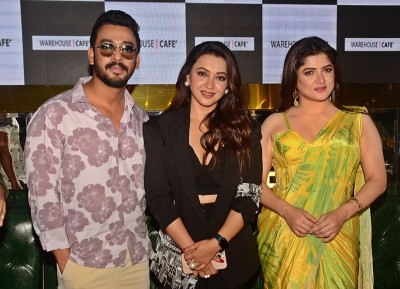
KIFF pays photographic tribute to Ray's Nayak
The exhibition, aptly titled NAYAK – THE HERO, was inaugurated by veteran actress Madhabi Mukherjee along with filmmaker Haranath Chakraborty a couple of days ago.
The exhibition not only charts the historic evolution and growth of Bengali cinema’s sole screen icon but also displays, alongside photographs, posters of his famous films with dates and names that offers all three that cinema is expected to offer – information, education and entertainment.
Nayak (The Hero) happens to be one of four digitally restored Ray movies that will be shown in PVR cinemas from January.
 Though it is an outstanding film, it seems to have been ignored by critics and film scholars compared to the attention paid to his other films.
Though it is an outstanding film, it seems to have been ignored by critics and film scholars compared to the attention paid to his other films.
The storyline spans the time it takes for Rajdhani Express to travel from Kolkata to New Delhi.
Almost the entire film is shot inside what appears to be a moving train compartment but in actuality, is a classic example of art director Bansi Chandragupta’s magic creative powers.
His design of the interior of a railway compartment for Nayak was so flawless that most viewers took it to be real.
Nayak won the National Award for the Best Feature Film in Bengali in 1967.
“The King is dead. Long live the King,” suits no one better than it does Bengali cinema’s greatest screen icon Uttam Kumar.
It has been 26 years since he passed away at the comparatively young age of 55, but he still rules over the minds and spirits of a large slice of the Bengali audience.
His films still draw packed houses.
 Anecdotes from his work in and out of the studios, juicy gossip about the many women in his life, still fill the pages of cinema journals and gossip magazines.
Anecdotes from his work in and out of the studios, juicy gossip about the many women in his life, still fill the pages of cinema journals and gossip magazines.
Not less than ten biographies have been done on Uttam Kumar.
His active involvement with the cause of old, ageing and destitute artistes keep on doing the rounds of Tollygunje studios.
He remains Bengali cinema’s one and only super-hero –Mahanayak, Uttam Kumar.
Offering a fine aesthetic contrast with the Black-and-White photographs are the coloured posters that also offer an insight into the history of what film posters were like during the time when Uttam Kumar reigned supreme.
Each photograph weaves a story of its own.
There are larger-sized, candid photographs of the matinee idol in different poses, often caught in close-up.
Stills from his major films over his career with dates of the films’ release and names of the films demonstrate the meticulously with which the exhibits have been put together and arranged to provide a photographic history of Bengali cinema’s biggest star.
(Reporting by Shoma A. Chatterji)
Support Our Journalism
We cannot do without you.. your contribution supports unbiased journalism
IBNS is not driven by any ism- not wokeism, not racism, not skewed secularism, not hyper right-wing or left liberal ideals, nor by any hardline religious beliefs or hyper nationalism. We want to serve you good old objective news, as they are. We do not judge or preach. We let people decide for themselves. We only try to present factual and well-sourced news.





